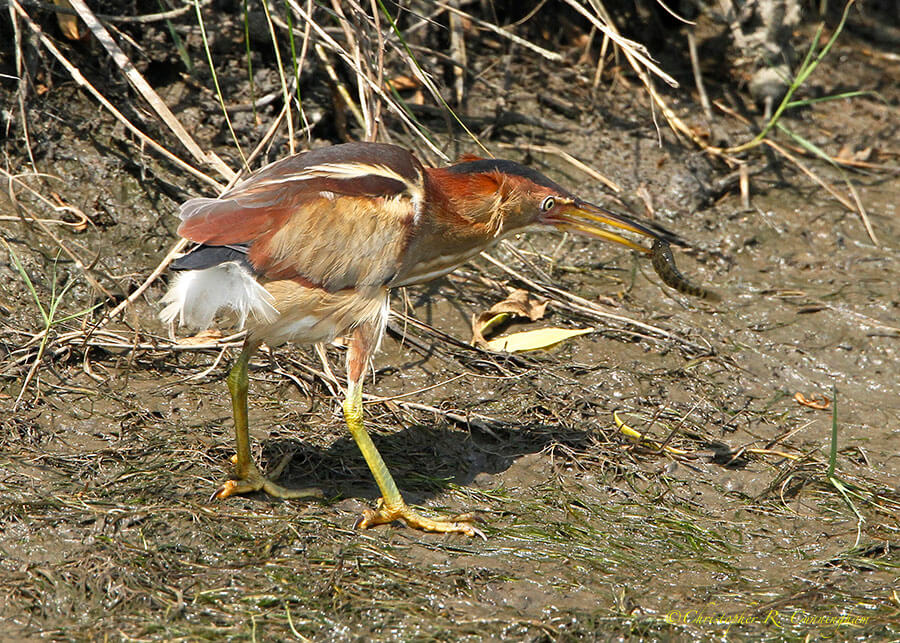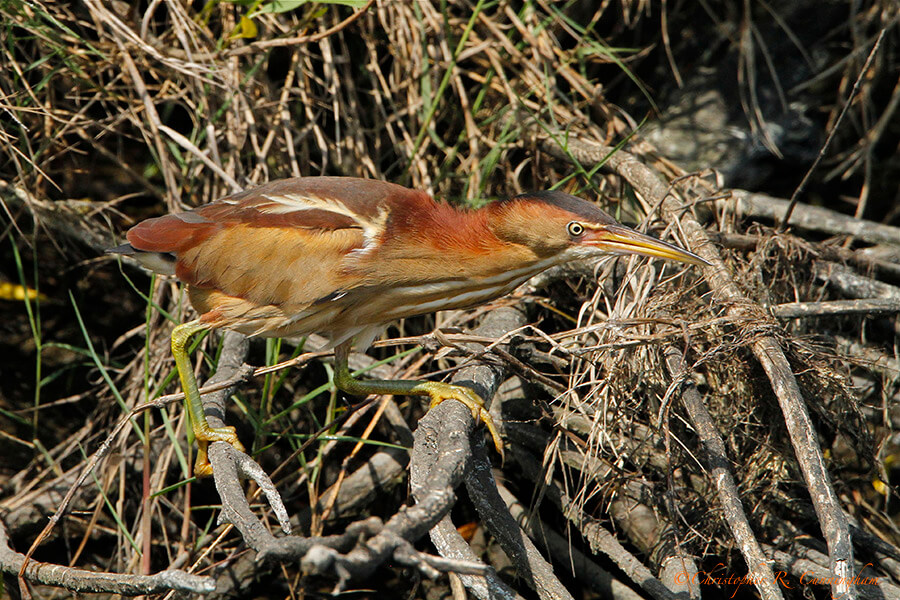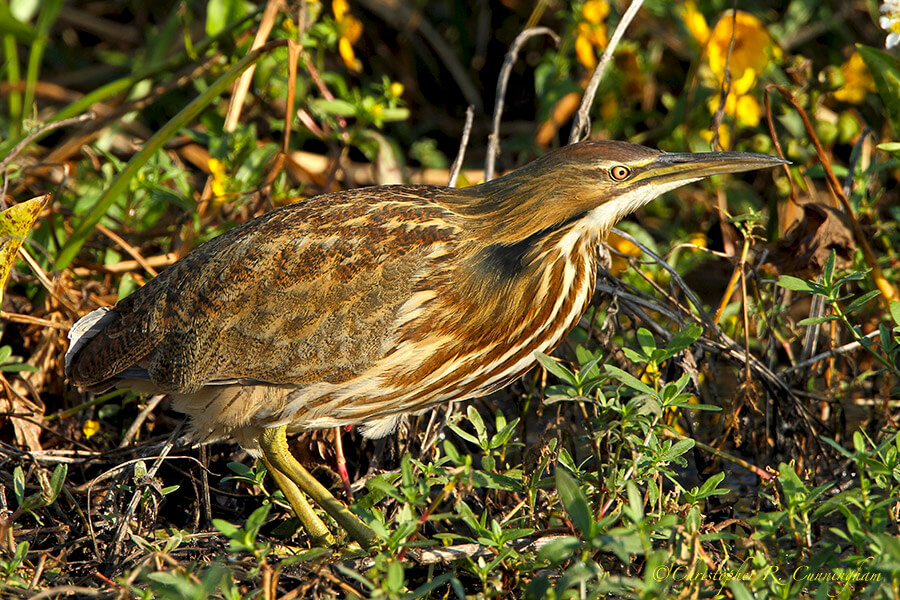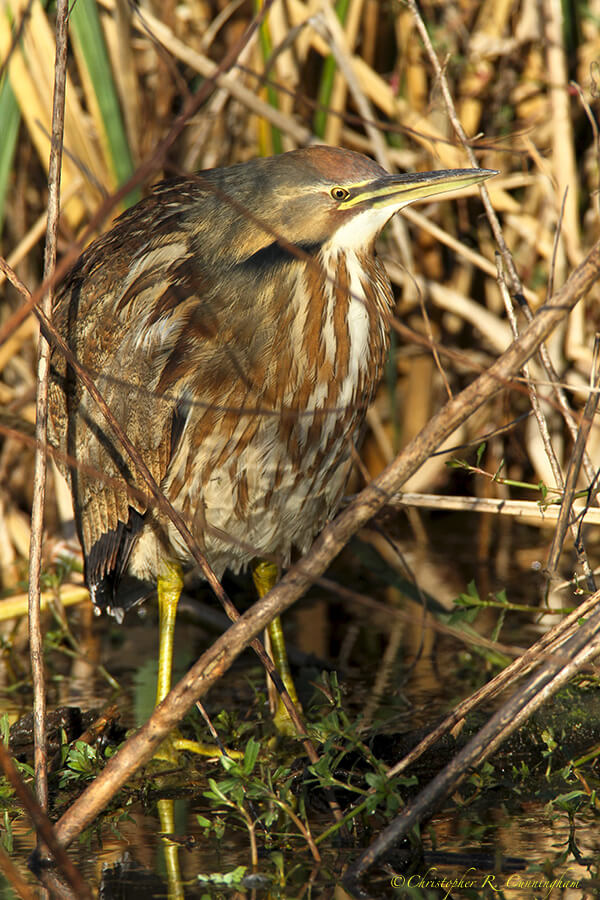
Of the heron, egret and bittern family, the two species of North American bitterns are the most secretive. When spotted, their slow, precise, almost machine-like stalking behavior is mesmerizing to watch. Sometimes bitterns seem acutely aware of the photographer’s every breath and muscle-twitch, and sometimes they are completely oblivious to observers and go about their hunting as if they alone occupied the planet.
Least Bitterns summer in the eastern U.S., including the Gulf Coast, and American Bitterns winter along the Gulf Coast—so for the Texas birder, the possibility (at least) exists for seeing bitterns throughout much of the year.

Of the two bittern species, the American Bittern has the more cryptic coloration, I think. Many times I have had to double-take when I first noticed one–especially if the bird had adopted its neck-straight-up “I’m-a-clump-of-marsh-vegetation pose.” Least Bitterns are also difficult to see among marsh vegetation and have been known to sway back and forth to mimic the gentle motion of vegetation tussled by the wind. These are clearly creatures that do not want to be noticed.

It’s hard to recommend a place to see bitterns in the Houston area. The south side of Pilant Lake at Brazos Bend State Park is the most reliable spot to see American Bitterns I know. But in many visits to that area, I’ve only seen a Least Bittern once. And that’s how I would characterize my experience with Least Bitterns: I’ve seen them many places once.
Calls of both species of bitterns are distinctive enough to know when they’re around, even if they are invisible, especially the Least Bittern’s rather monkey-like (to my ear) coo-coo-coo. Least Bitterns are also easy to spot in flight, given their heron-style of flight and rufous markings—but once they’re back in the reeds, it’s good-bye, Charlie!

Don’t wait to be hunted to hide, that was always my motto. —Samuel Beckett, Molloy
©2014 Christopher R. Cunningham. All rights reserved. No text or images may be duplicated or distributed without permission.